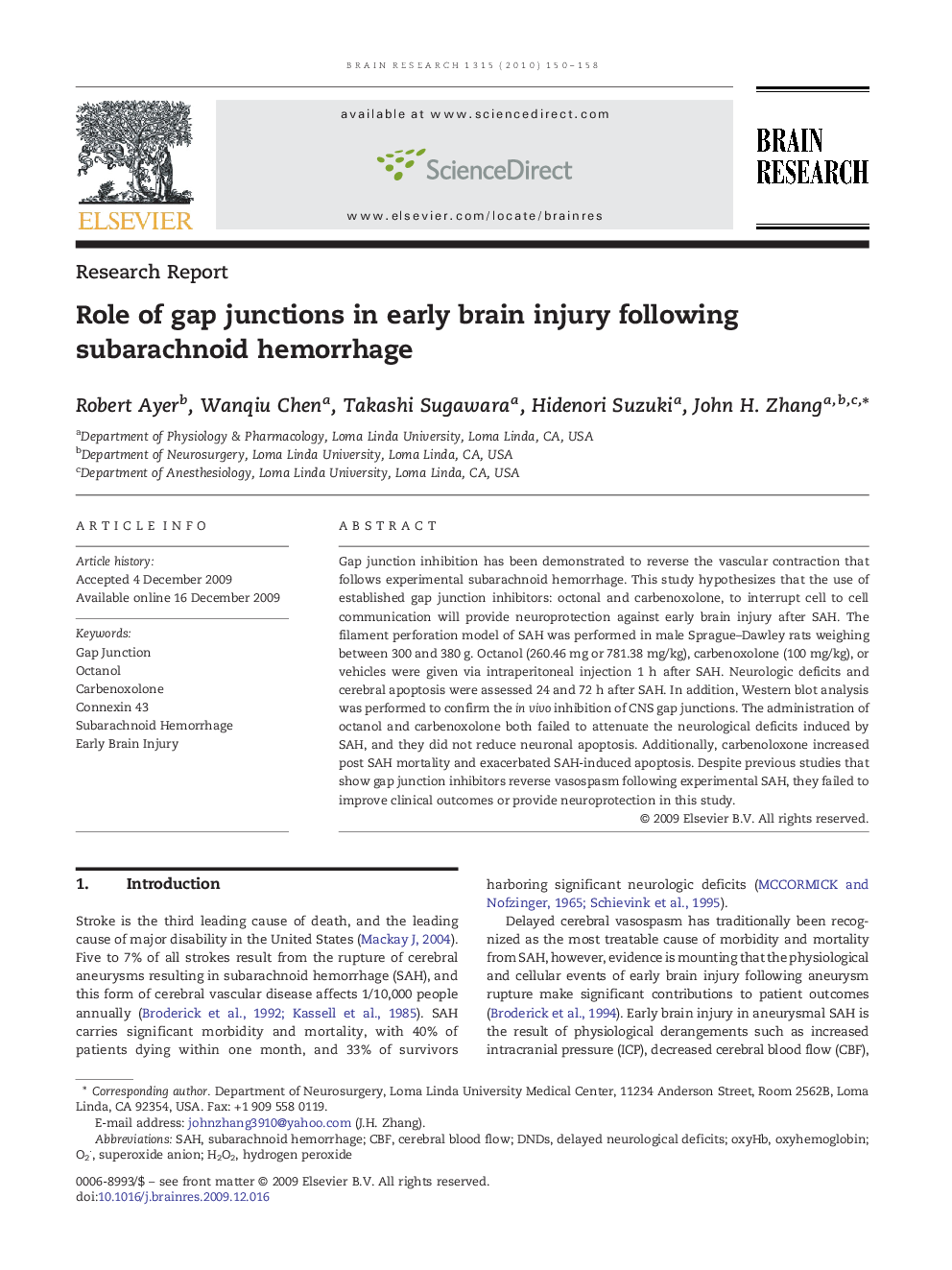| Article ID | Journal | Published Year | Pages | File Type |
|---|---|---|---|---|
| 4327469 | Brain Research | 2010 | 9 Pages |
Gap junction inhibition has been demonstrated to reverse the vascular contraction that follows experimental subarachnoid hemorrhage. This study hypothesizes that the use of established gap junction inhibitors: octonal and carbenoxolone, to interrupt cell to cell communication will provide neuroprotection against early brain injury after SAH. The filament perforation model of SAH was performed in male Sprague–Dawley rats weighing between 300 and 380 g. Octanol (260.46 mg or 781.38 mg/kg), carbenoxolone (100 mg/kg), or vehicles were given via intraperitoneal injection 1 h after SAH. Neurologic deficits and cerebral apoptosis were assessed 24 and 72 h after SAH. In addition, Western blot analysis was performed to confirm the in vivo inhibition of CNS gap junctions. The administration of octanol and carbenoxolone both failed to attenuate the neurological deficits induced by SAH, and they did not reduce neuronal apoptosis. Additionally, carbenoloxone increased post SAH mortality and exacerbated SAH-induced apoptosis. Despite previous studies that show gap junction inhibitors reverse vasospasm following experimental SAH, they failed to improve clinical outcomes or provide neuroprotection in this study.
